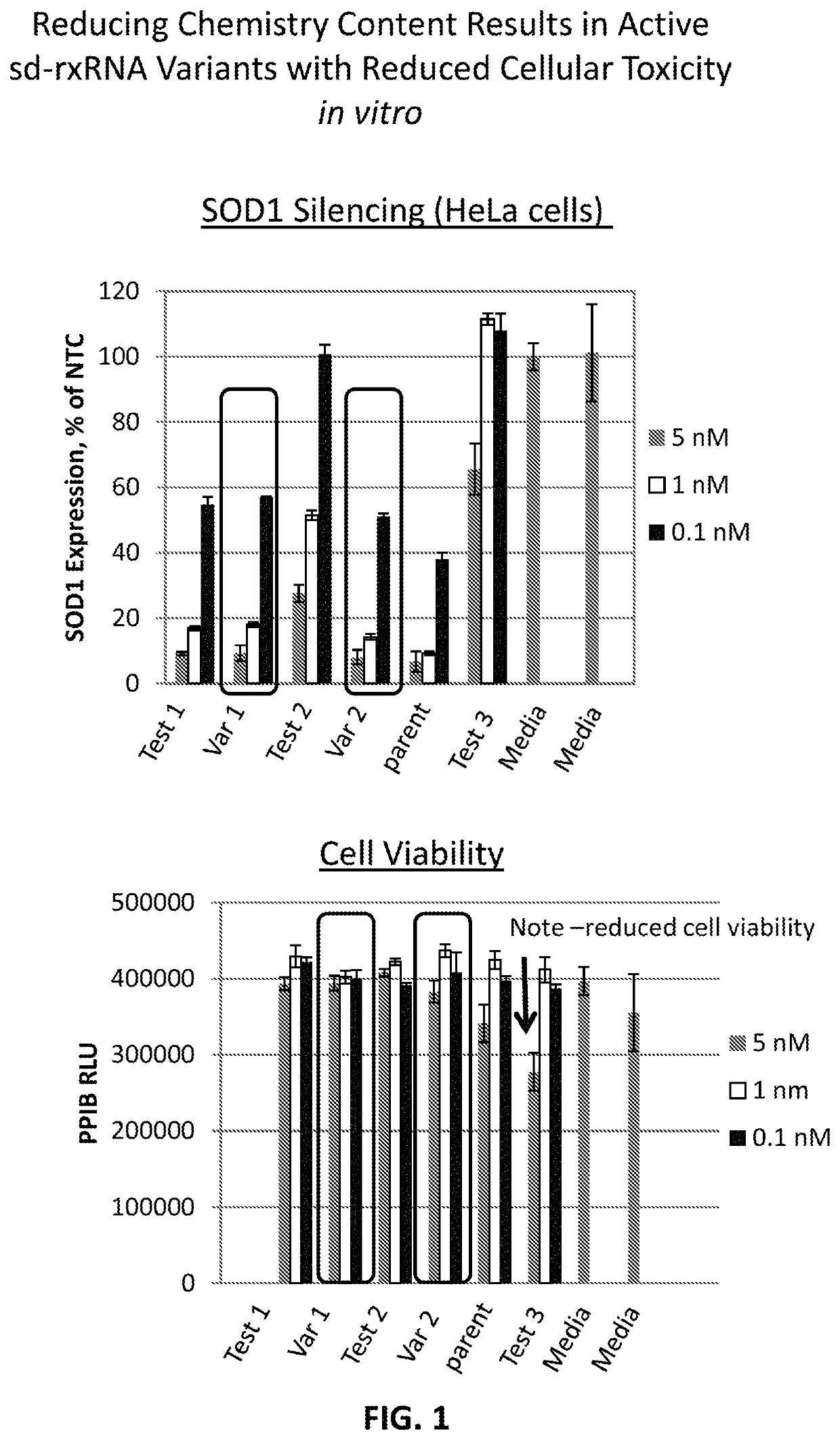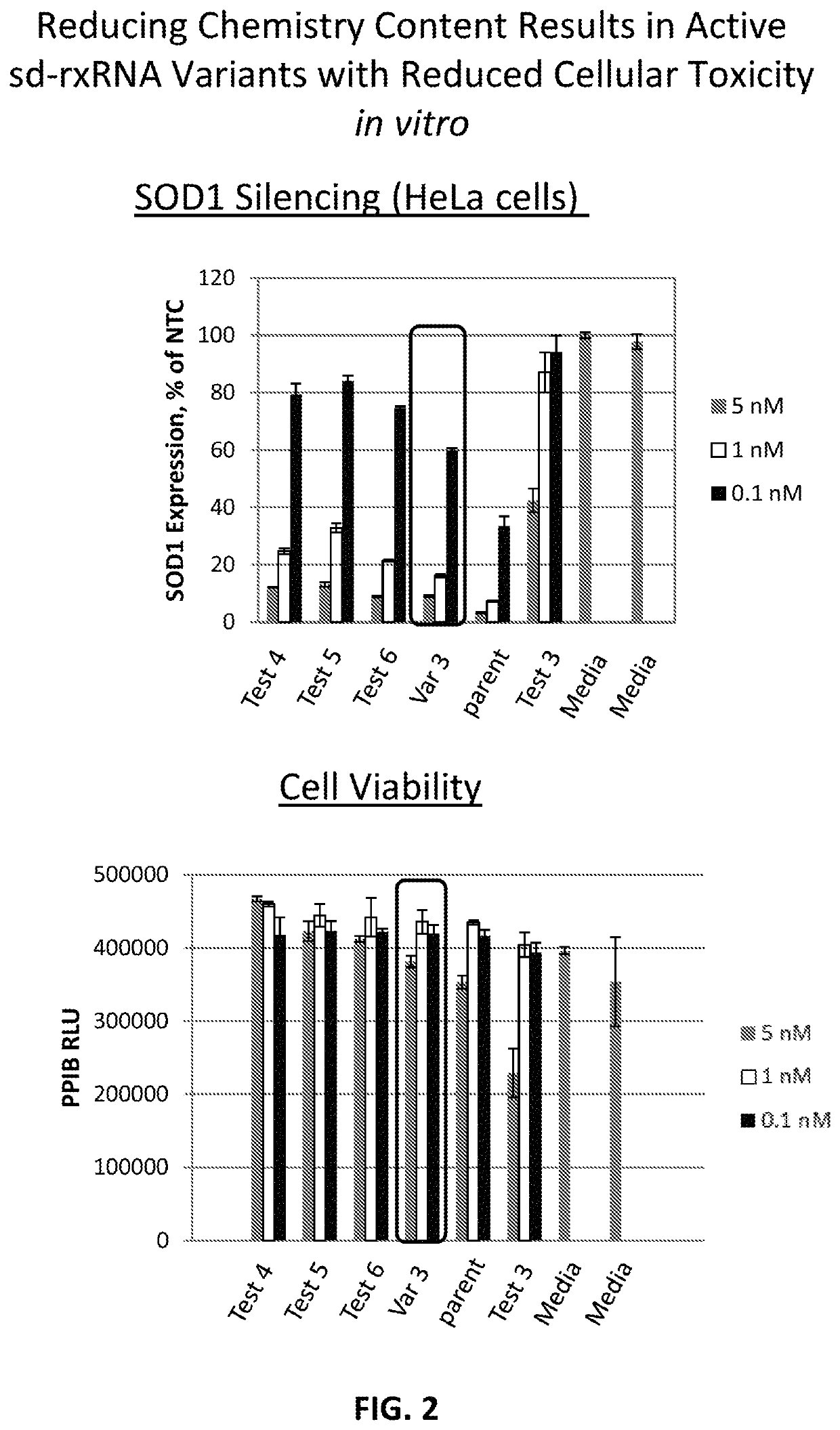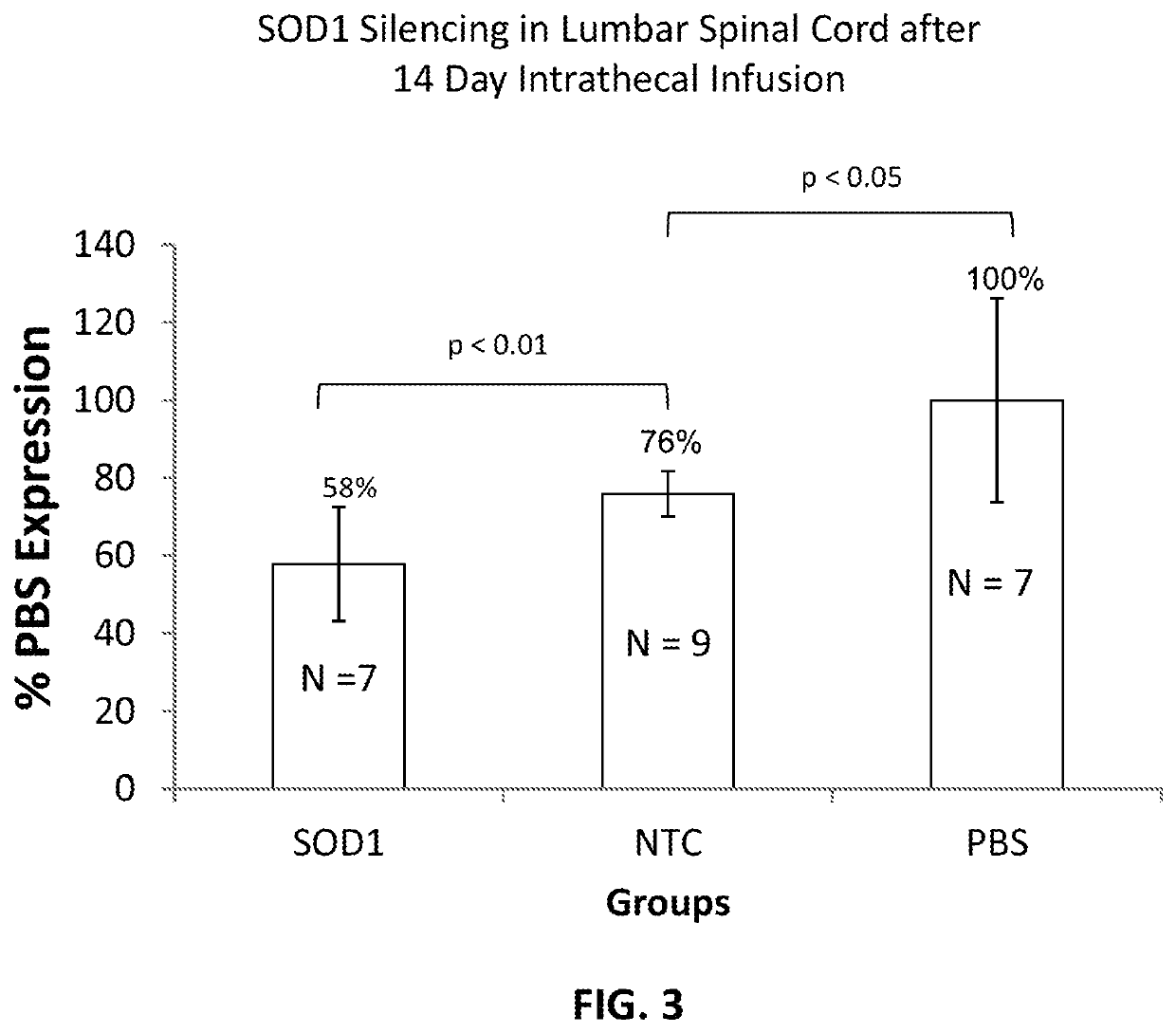Methods for treating neurological disorders using a synergistic small molecule and nucleic acids therapeutic approach
a small molecule and therapeutic approach technology, applied in the direction of drug compositions, heterocyclic compound active ingredients, nervous disorders, etc., can solve the problems of inability to achieve the intended efficient inhibition of gene expression (including protein synthesis) using such compositions in vivo, the delivery of rod type molecule cannot pass through the cell-membrane, and the effect of reducing the risk of strok
- Summary
- Abstract
- Description
- Claims
- Application Information
AI Technical Summary
Benefits of technology
Problems solved by technology
Method used
Image
Examples
example 1
ation of SOD1-Targeting Sd-rxRNA Variants
[0457]sd-rxRNA variants targeting SOD1 were designed, synthesized and screened in vitro to determine the ability of the sd-rxRNA variant to reduce target gene mRNA levels. The sd-rxRNA variants were tested for activity in HeLa cells (human cervical carcinoma cell line, 10,000 cells / well, 96 well plate). HeLa cells were treated with varying concentrations of a panel of SOD1-targeting sd-rxRNA variants or non-targeting control in serum containing media. Concentrations tested were 5, 1 and 0.1 μM. The non-targeting control sd-rxRNA is of similar structure to the SOD1-targeting sd-rxRNA variants and contains similar stabilizing modifications throughout both strands. Forty eight hours post administration, cells were lysed and mRNA levels determined by the Quantigene branched DNA assay according to the manufacture's protocol using gene-specific probes (Affymetrix, Santa Clara, Calif.). Exemplary sense and antisense sequences are presented in Tables...
example 2
Variant Silencing of SOD1 in CNS
[0464]FIG. 3 demonstrates SOD1 silencing in vivo (mouse, lumbar spinal cord (LSC)) following a 14-day intrathecal administration of a SOD1 targeting ps-rxRNA. A statistically significant 24% reduction of SOD1 mRNA levels was observed in mice treated with the SOD1-targeting sd-rxRNA variant compared to the non-targeting control (FIG. 3).
[0465]Methods: SOD1-targeting sd-rxRNA variant or non-targeting control (NTC) was administered by intrathecal infusion, using an osmotic pump (filled with 100 μL of a 10 mg / mL solution of compound) for 14 days. Terminal biopsy samples of the spinal cord were harvested on Day 14. RNA was isolated and subjected to gene expression analysis by qPCR. Data were normalized to the level of the cyclophilin B (PPIB) housekeeping gene and graphed relative to the non-targeting control set at 1.0. Error bars represent standard deviation between the individual biopsy samples. P value for SOD1-targeting sd-rxRNA variant-treated group ...
example 3
Non-Genetic Model of ALS
[0466]FIG. 3 demonstrates that reduction of SOD1 mRNA levels in the spinal cord of normal mice results in adverse events that mimic ALS disease progression. Therefore, compounds that are able to reduce the activity or levels of SOD1 protein and / or mRNA, such as the SOD1-targeting sd-rxRNA variant, could be used to generate a sporadic, non-genetic model of ALS. Reduction of SOD1 enzymatic activity, protein levels or mRNA levels by compounds (such as small molecules, antibodies or nucleic acids), results in increased levels of reactive oxygen species (ROS) in the CNS. Increased levels of ROS leads to oxidative stress and ultimately, neurological disorders such as ALS.
PUM
| Property | Measurement | Unit |
|---|---|---|
| size | aaaaa | aaaaa |
| flow rate | aaaaa | aaaaa |
| partition coefficient | aaaaa | aaaaa |
Abstract
Description
Claims
Application Information
 Login to View More
Login to View More - R&D
- Intellectual Property
- Life Sciences
- Materials
- Tech Scout
- Unparalleled Data Quality
- Higher Quality Content
- 60% Fewer Hallucinations
Browse by: Latest US Patents, China's latest patents, Technical Efficacy Thesaurus, Application Domain, Technology Topic, Popular Technical Reports.
© 2025 PatSnap. All rights reserved.Legal|Privacy policy|Modern Slavery Act Transparency Statement|Sitemap|About US| Contact US: help@patsnap.com



